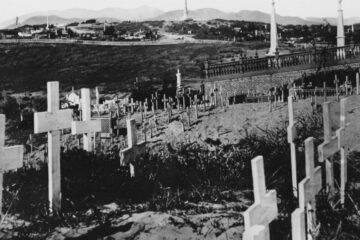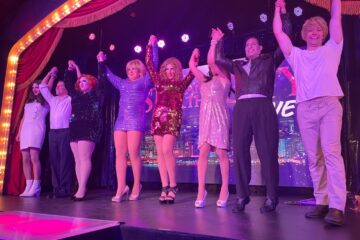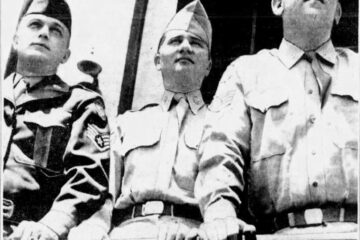Where The Bodies Are Buried: San Francisco’s Former Cemeteries
It has been over 100 years since anyone was buried in San Francisco. In 1902, it became illegal to bury new bodies in the city, and by 1921, bodies were being moved to new land in Colma. By 1941 nearly all the cemeteries were gone, and largely forgotten.
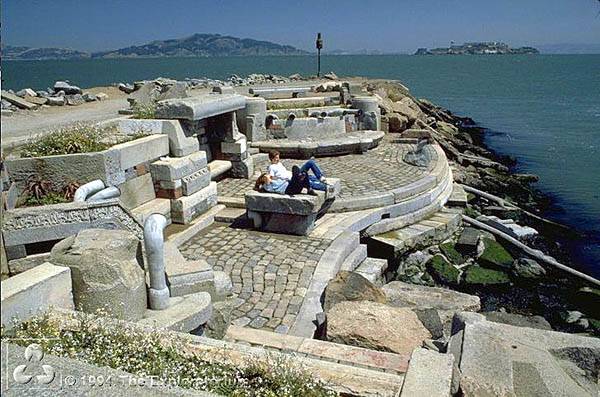
The Wave Organ in the Marina, at the end of the breakwater behind the St. Francis Yacht Club. Photo: Exploratorium
San Francisco’s Aquatic Park carefully constructed swimming zone is protected from the rough waters of the bay by a built-in breakwater made up from pieces of stone collected from the cemeteries that were being moved out of the city. This was around 1936 and may possibly be considered the first sign of gentrification. Land hungry developers were ready to evict the dead- miners and immigrants would end up in mass graves in Colma while their tombstones ended up in the city’s rubble pile for future building projects.
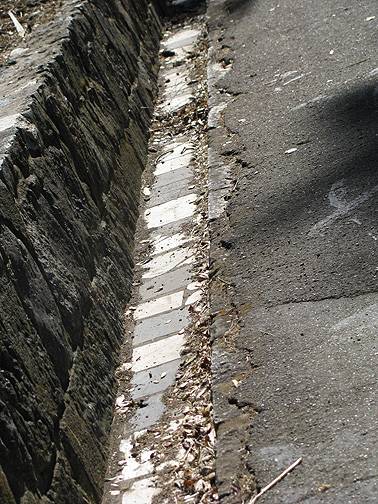
Buena Vista Park gutter paved with marble headstones from old cemeteries. Photo: Chris Carlsson via FoundSF.
These unclaimed tombstones are now at the Marina District, as a path liner in Buena Vista Park, and at Aquatic Park where the distinctive stones can be easily seen at low tide. These stones were also used to make one of my personal favorite spots in the city, the soothing Wave Organ near the St. Francis Yacht Club. The wave organ has been a place of retreat for me for many years. Finding out that it’s made out of lost tombstones confirms why I always feel safe and comforted when I am there. #ghoul4ghoul
Now, these precious remnants from tombstones of the past aren’t the only lingering pieces of San Francisco’s cemeteries. Not far from the Aquatic Park sits the Lincoln Park Golf Course. Acres of lush greenery, zooming golf carts on a neatly cemented path leading visitors to the stunning Legion of Honor Museum, all the while never knowing what, or rather who lies below them. In the late 1800’s this gigantic chunk of land was home to roughly 29,000 graves, and previously known as the Golden Gate Cemetery. As with other cemeteries in the city, graves were eventually uprooted and moved out to Colma, yet some were unfortunately left behind. Daily Alta California reported:
“As the district known as Richmond is fast becoming settled and the close proximity of the cemeteries is becoming undesirable and obnoxious, a proper regard for public health should prohibit all future burials in these cemeteries. Burial-grounds should hereafter be located outside the city and county. The City Cemetery should also be discontinued (“The Grand Jury,” Daily Alta California, December 18, 1890, 6:3).”

Workers in the process of converting Odd Fellows Cemetery into Rossi Playground (Richmond District) in December 1933. Photo via OpenSFHistory.
Construction work within Lincoln Park led to the surprising uncovering of some of these graves and the realization that so many were left behind from the original move. The area where workers found the bones once belonged to the French Mutual Benevolent Society of San Francisco. Several of the skeletons showed signs of autopsies and other postmortem studies, which were illegal in the 19th century.
One of the skulls apparently had evidence of a gunshot wound and was housing a .44 caliber bullet from a Winchester pistol. It was found rattling around inside the skull. Though the owner of the skull is still currently unknown, newspaper archives may hold important clues that researchers are examining. On January 15, 1896, the San Francisco Call told a story of a French doctor, E.L. Molass, who had sailed to New York on a steamer called S.S La Bretagne, then traveled overland to San Francisco, where he arrived in late December. Molass was suffering from tuberculosis and hoped the California climate would cure him. Apparently, he didn’t know about the city’s fog and wind. He wound up in the French hospital, but “sickness and despondency” overtook him, according to the San Francisco Call. On January 14, 1896, he “sent a bullet into his right ear.”
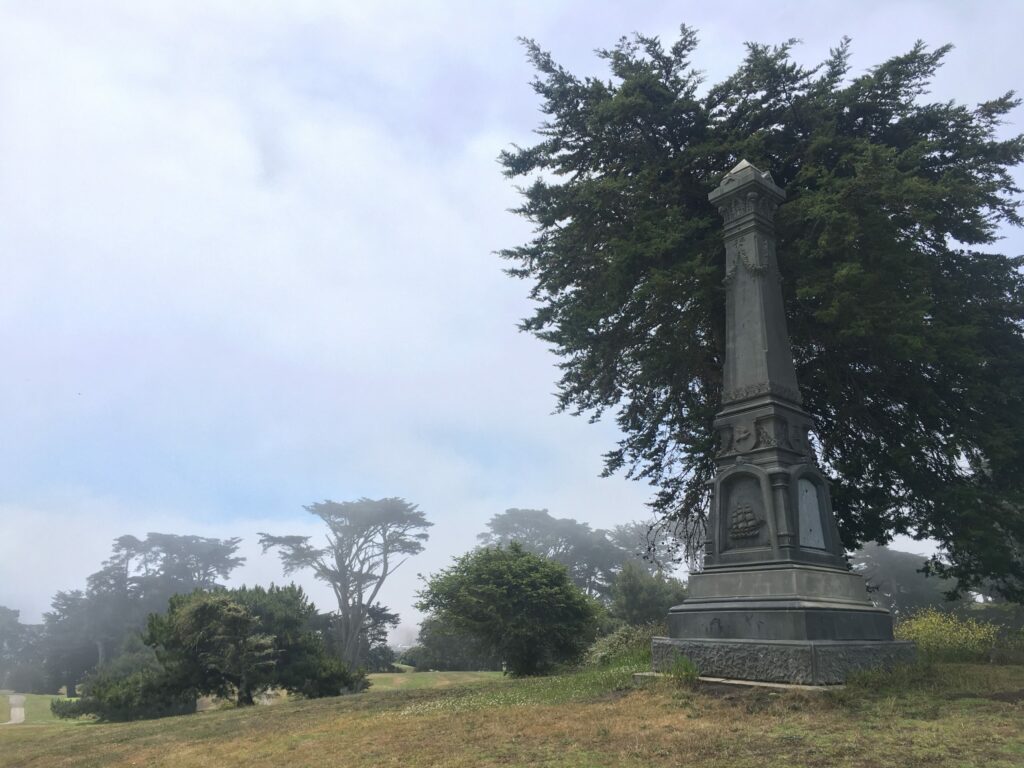
The fifteen-foot-high cast zinc monument in Lincoln Park marks the burial ground established by the Ladies’ Seaman’s Friend Society in the 1880s. Photo SF Heritage.
Two visible signs of the cemetery’s existence are still present at Lincoln Park Golf Course in the form of massive markers. One, erected by the Ladies’ Seamen’s Friend Society of the Port of San Francisco is a large obelisk visible from the parking lot of the Legion of Honor Museum. The other is the gateway-like rfunerary monument, which was once a central part of a Chinese plot in the cemetery. Both are worthy of a visit, in the recently approved historical landmark cemetery.
San Francisco’s city is as layered and as rich as all of the stone that lies beneath it. The original home of the Ohlone people is famed for Spanish colonizers, the gold rush, the Beats and the Summer of Love, queer and trans rights movements, and the tech boom. It’s also famed for having no cemeteries within city limits, not including the historic Mission Dolores de Asis, the National Cemetery in the Presidio, and the Columbarium which holds thousands of niches. I would argue that the Golden Gate Cemetery is still very much there. Unfortunately, because San Francisco removed burials in the 20th century, local victims of the 1906 earthquake and fire, the AIDS crisis, the Jonestone massacre, and the COVID-19 pandemic couldn’t be buried in a place they called home. You can’t help but wonder if the dead even matter in San Francisco.
References:
Black, A. (2012, July 19). Fort Miley Batteries – San Francisco, California. Atlas Obscura. Retrieved March 10, 2023, from https://www.atlasobscura.com/places/fort-miley-batteries-lands-end
Daily Alta California.
Eldredge, Zoeth S. The Beginnings of San Francisco. San Francisco: Zoeth S. Eldredge, 1912. 2 vols.
Salvano, C. (2017, December 9). San Francisco’s Lost Cemeteries & Pioneer Burial Grounds. Chris Salvano. https://www.chrissalvano.com/mapping-san-francisco/san-francisco-cemeteries/san-franciscos-lost-cemeteries-pioneer-burial-grounds
San Francisco Call.
Proctor, William A. Location, Regulation and Removal of Cemeteries in the City and County of San Francisco. [San Francisco, Calif.]: Dept. of City Planning, City and County of San Francisco, [1950].

Howdy! My name is Katy Atchison and I'm an Associate Editor for Broke-Ass Stuart.
I want to take the time to say thank you for supporting independent news media by reading BrokeAssstuart.com. Supporting independent news sources like Broke-Ass Stuart is vital to supporting our community because it amplifies the voices of a wide variety of diverse opinions. You also help support small businesses and local artists by sharing stories from Broke-Ass Stuart.
Because you're one of our supporters, I wanted to send over a pro-tip.
Our bi-weekly newsletter is a great way to get round ups of Broke-Ass Stuart stories, learn about new businesses in The Bay Area, find out about fun local events and be first in line for giveaways.
If you’d like to get our newsletter, signup right here, it takes 5 seconds.



